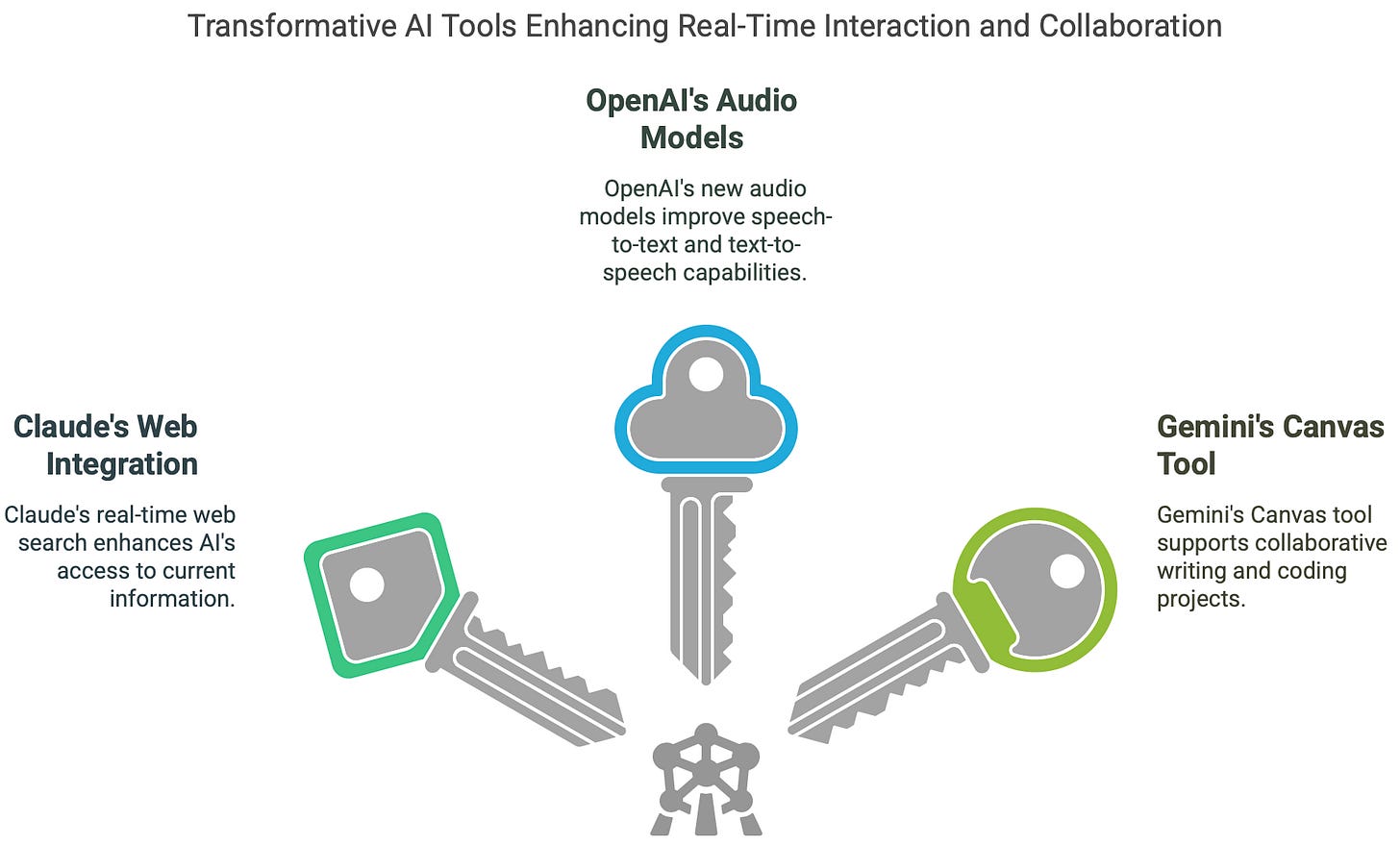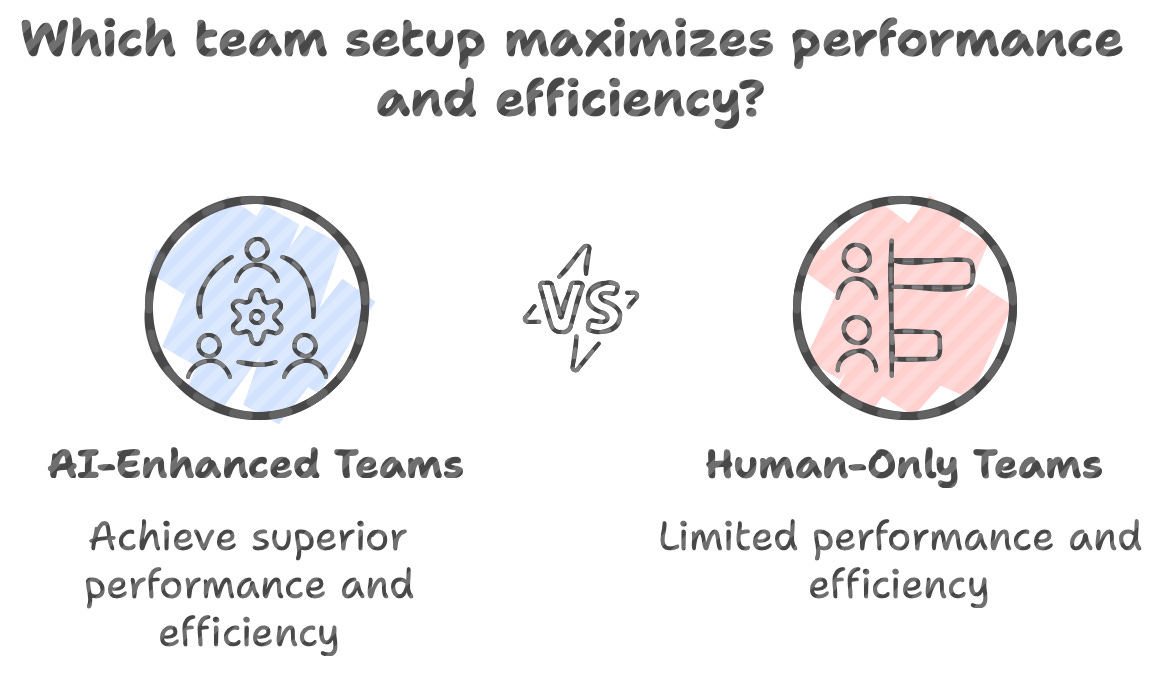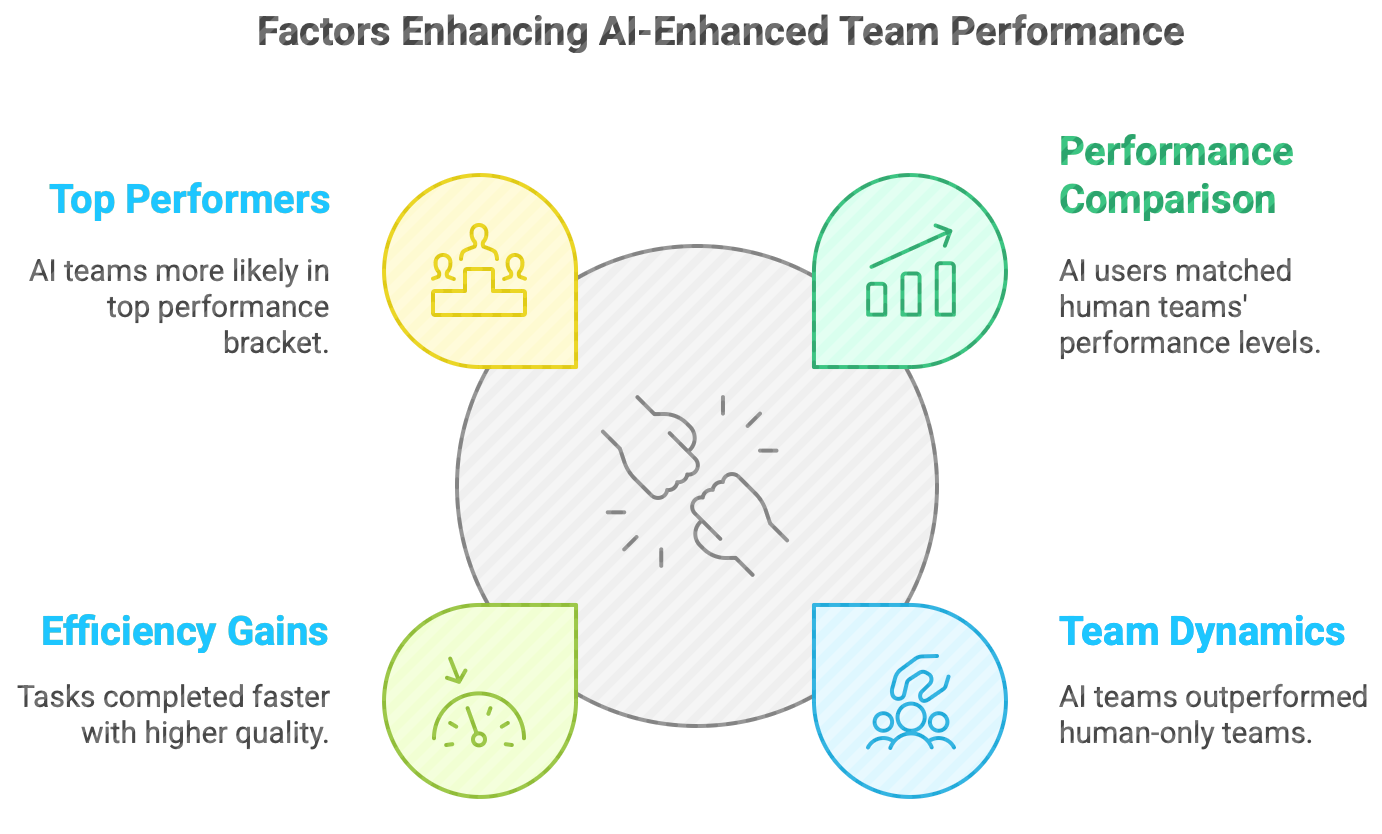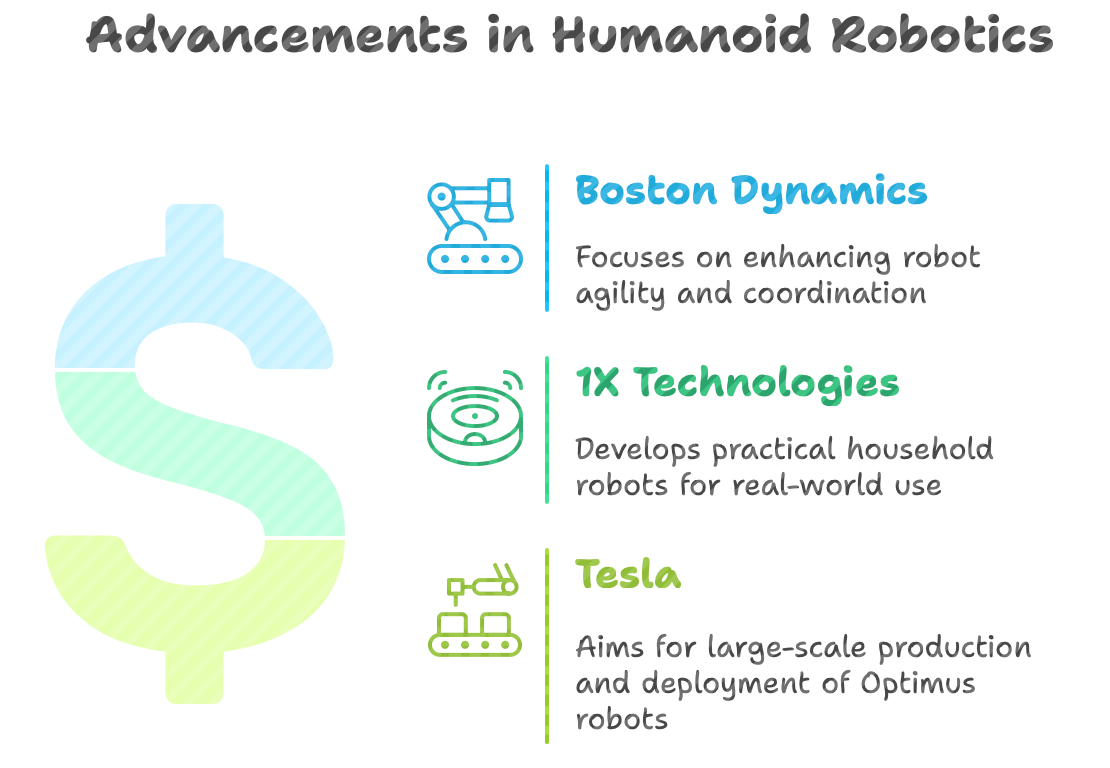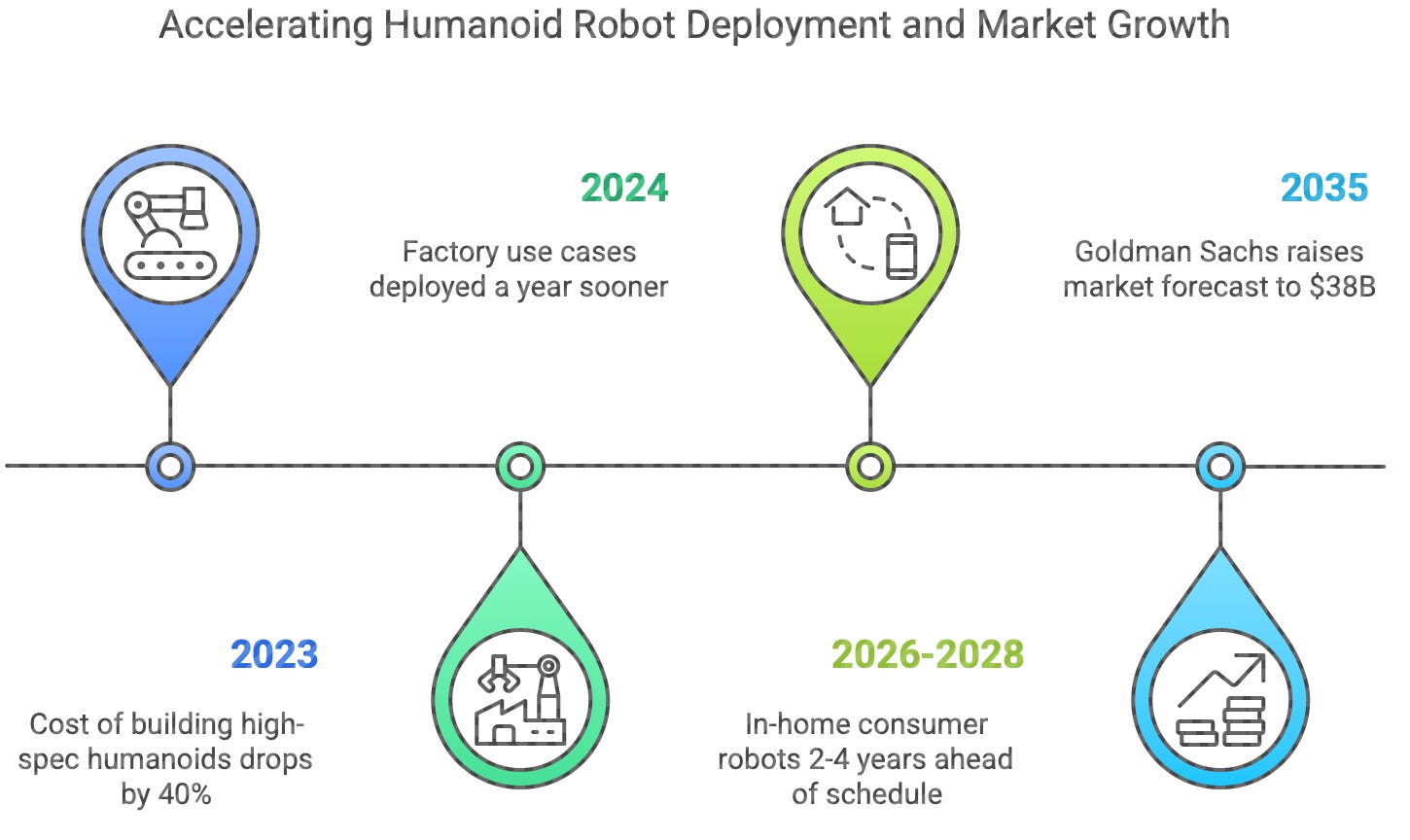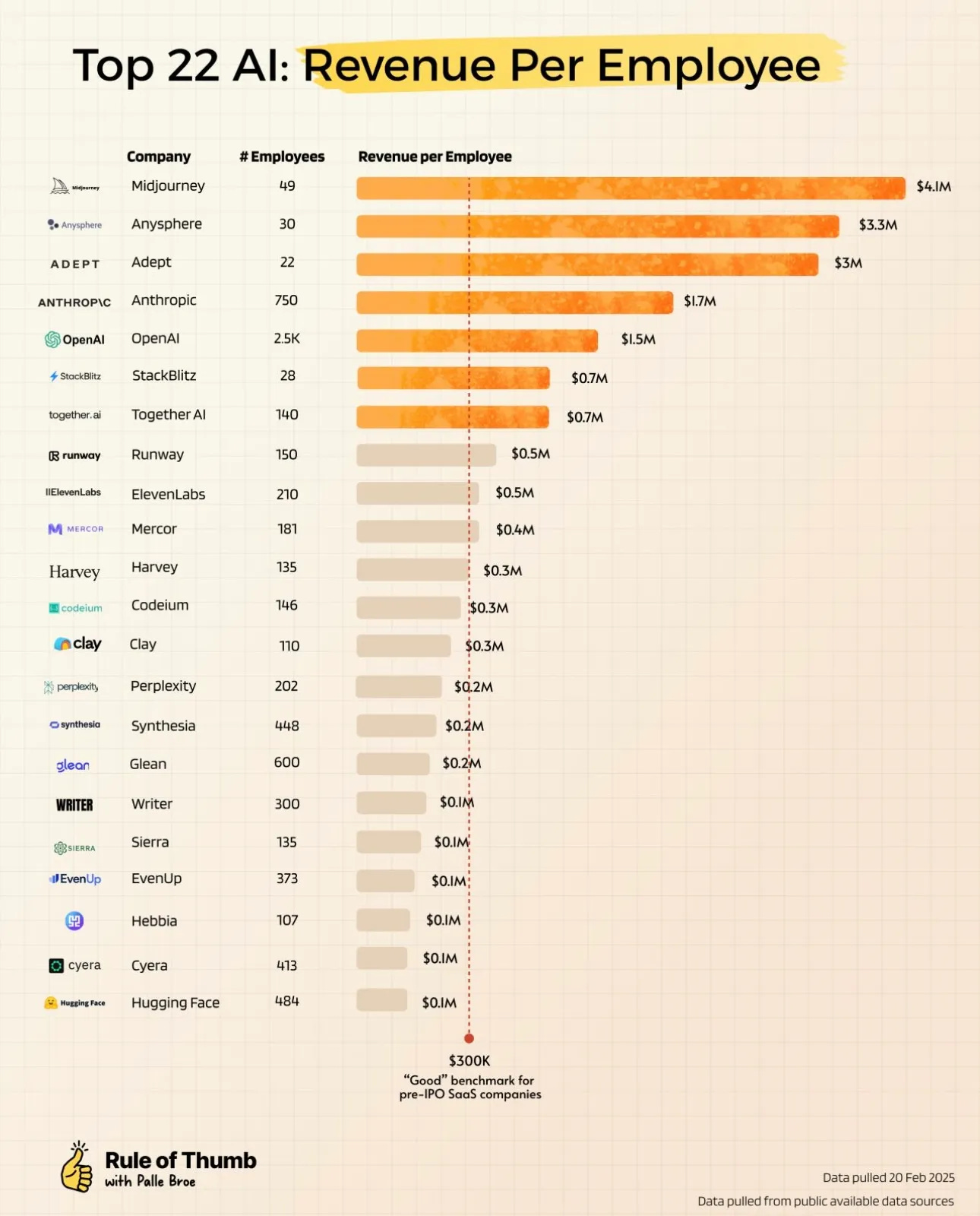Welcome to Binary Circuits’ 14th weekly edition
Your weekly guide to most important developments in technological world
Dear Readers,
This week in Binary Circuit, we study how the frontier AI companies—Claude, OpenAI, and Gemini—are sprinting to outdo one another with potent fresh features. Additionally, according to a ground-breaking Harvard study, AI is breaking down silos and improving performance as it is becoming a real collaborator. We also examine the fast development of humanoid robots and the reasons they might soon change employment and industry as we know it.
Let’s dive in.
The three leading AI platforms—Claude, OpenAI, and Gemini—are engaged in a feature war, each striving to add impressive capabilities.
Recently, Claude has integrated web searches; OpenAI has developed advanced text-to-speech and speech-to-text models; Gemini has launched its Canvas tool.
Anthropic's AI chatbot, Claude, now features real-time web search abilities. This functionality lets Claude access and incorporate current online information with source references.
OpenAI has introduced advanced audio models. Two new speech-to-text models exceed the performance of the previous “Whisper” model, and another novel text-to-speech model offers the capability to respond to stylistic instructions.
These models seek to advance the development of intelligent and adaptable voice assistants. An interactive prototype, OpenAI.fm, enables developers to choose voices and personalize speech features.
The real game-changer? Costs. OpenAI's text-to-speech service, at just $0.015 per minute, is about 85% less than market leader ElevenLabs.
Gemini has launched "Canvas" for group projects. 'Canvas,' an interactive workspace, facilitates real-time collaboration on writing and coding tasks. With Gemini's assistance, users can create initial drafts and refine them by adjusting tone, structure, and content as needed. Canvas provides live previews for coding projects, allowing developers to instantly see the results of their changes.
Your best teammate might not be human. Why business leaders should pay attention.
We’ve all heard about “work husbands” and “work wives.” But what about your cybernetic teammate?
That’s the term coined in a groundbreaking new Harvard study conducted with 776 professionals at Procter & Gamble. The study reveals that AI is not just a tool but a teammate that enhances performance, fosters collaboration, and boosts mood.
Consider this: a machine that aids humans in collaborating more effectively with one another.
Ethan Mollick stated that treating AI as a tool misses the point; it’s evolving into a cybernetic teammate.
Let’s break it down.
AI Can Match—and Sometimes Outperform—Teams
Researchers tested four setups: solo individuals, human-only teams, individuals using AI, and teams using AI.
Here’s what they found:
Individuals using AI performed as well as human teams—a 0.37 standard deviation boost in performance.
Teams with AI did even better, outperforming human-only teams and solo AI users.
AI users completed their work 16.4% faster while writing more and producing higher-quality work.
Teams using AI were 9.2 percentage points more likely to be in the top 10% of best-performing solutions—3x better than solo humans.
So yes, your AI assistant might be the most productive “employee” on your team.
Breaking Silos and Blending Expertise
Before AI, R&D proposed solutions while sales pitched marketing ideas.
With AI, those lines disappeared. People generated hybrid ideas, balancing technical and commercial aspects regardless of background. AI helped users overcome knowledge gaps and communicate effectively.
AI and the Human Side of Work
Surprisingly, AI users reported more energy, excitement, and enthusiasm while experiencing less stress. The emotional boost from AI matched or exceeded the benefits of team collaboration.
However, despite better performance, AI users felt less confident in their work, a phenomenon termed' AI imposter syndrome”—a discrepancy between performance and self-perception.
What This Means for Organizations
Here’s the takeaway for leaders:
Don’t just add AI to existing processes—rethink the team itself.
Use AI to help people contribute outside their silos, whether they’re in marketing, R&D, finance, or ops.
Recognize that AI-augmented individuals can sometimes do the work of entire teams.
And maybe, most importantly, train your people to work with AI. Study participants lacked AI expertise, widening the gap between AI haves and have-nots.
This could be the start. As GenAI models improve and employees become comfortable, we’ll likely see greater gains in performance and creativity collaboration.
The future of work isn’t just human vs. machine. It’s likely human + machine.
Humanoid robots could soon be pervasive. What is your strategy to reinvent or build a new business?
Humanoid robots used to seem like science fiction. Now, they’re quietly emerging as one of the fastest-moving—and most transformational—technologies of the decade.
Since the start of 2025, the pace of innovation has gone vertical. Let’s break it down:
A Leap in Capabilities
Boston Dynamics’ Atlas can now pull off cartwheels and breakdancing thanks to reinforcement learning. That’s not just cool—it’s coordination, agility, and control that bring robots closer to handling complex, real-world tasks.
Meanwhile, 1X Technologies is pursuing a more practical approach. Their humanoid, Neo Gamma, is slated for in-home trials in hundreds to thousands of households by the end of 2025. Imagine testing a general-purpose robot in your living room by the year's end.
Tesla aims for 10,000–12,000 Optimus robots this year, scaling to 50,000 by 2026. This isn't a prototype. Tesla is producing 10K+ Optimus robots, aiming for 50K+ in 2026.
Smarter, Cheaper, Faster
NVIDIA launched Isaac GR00T, an open AI foundation model specifically for robots. It’s designed to help humanoids learn faster, generalize better, and move from demo videos to factory floors and city streets.
At the same time, the cost of building high-spec humanoids has dropped by ~40%—from ~$250K to ~$150K in just a year, thanks to broader supply chains and cheaper components.
This drastically shortens the timeline for real-world deployment:
Factory use cases? A year sooner.
In-home consumer robots? 2–4 years ahead of schedule.
Market Opportunity is Immense
Goldman Sachs just raised its 2035 market forecast for humanoid robots from $6B to $38B.
Why? Four reasons:
A 4x increase in projected shipments (to 1.4 million units)
AI acceleration (multimodal and end-to-end learning)
Demand from hazardous and aging workforce roles
And that’s just hardware. The labor value of robots could generate $24 trillion in economic output, according to Ark Invest.
From Factory to Front Door
Dr. Peter Diamandis predicts that humanoid robots will begin appearing in homes by 2026—washing dishes, folding laundry, and vacuuming.
A Post-Labor Society?
Diamandis does the math: A $30K robot, leased like a car, could cost $10/day—or about $0.40/hour. That’s a game-changer.
How do you not hire a robot at that rate?
This is especially true when businesses are facing increasing labor shortages, elder care crises, aging workforces, and increasing minimum wages.
We may soon face a profound question: “What kind of world do we want to build in a post-labor society?”
If we do this right, robots don’t just replace labor—they free us from it.
As Sadguru puts it, “Technology is the means by which humanity takes a vacation from basic survival.”
Chart of the week:
The advent and proliferation of AI are driving the rise of revenue per employee. AI is helping companies scale like never before. For instance, Midjourney earns $4.1M per employee, Anysphere generates $3.3M, and OpenAI averages $1.5M with 2,500 workers. The chart below from Digital Native shows the top companies by revenue/employee.
Sound bites you should know:
Transparent solar has just achieved a record efficiency of 12.3%—without obstructing your view. Building windows could become the new power generators.
China’s Ant Group reached Nvidia-level AI performance with Alibaba and Huawei chips at a 20% lower cost. China’s quest for self-sufficiency continues to accelerate innovation.
Aardvark, an AI-driven weather model, delivers accurate forecasts in minutes on a desktop, outperforming traditional systems with only 10% of the data. This is a promising development for better access in developing countries.
Thank you, for reading!
Cheers,
Team Binary Circuit.


